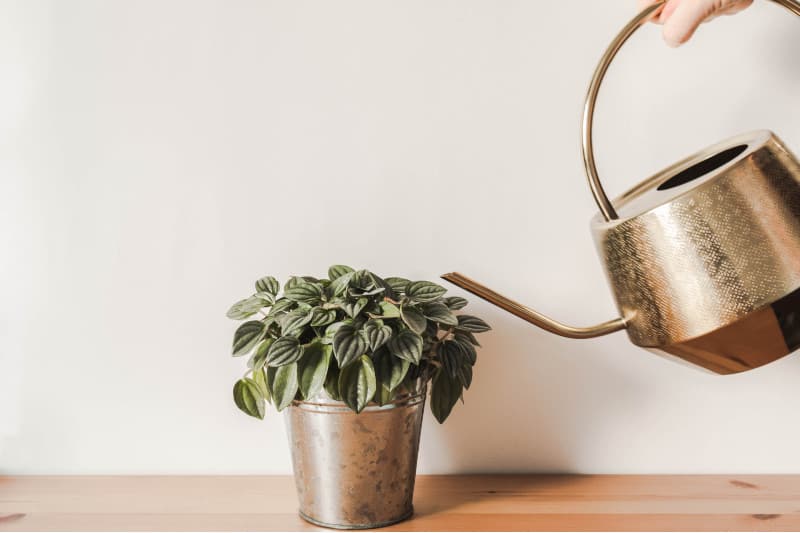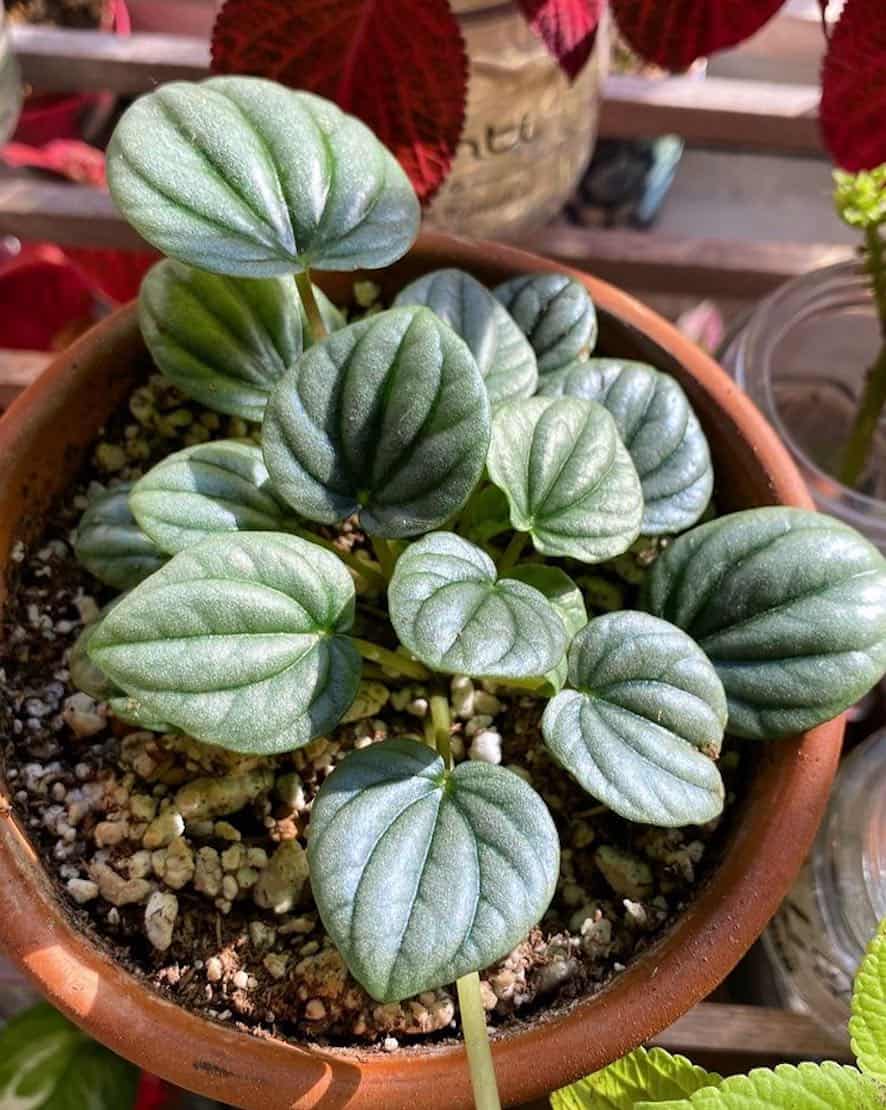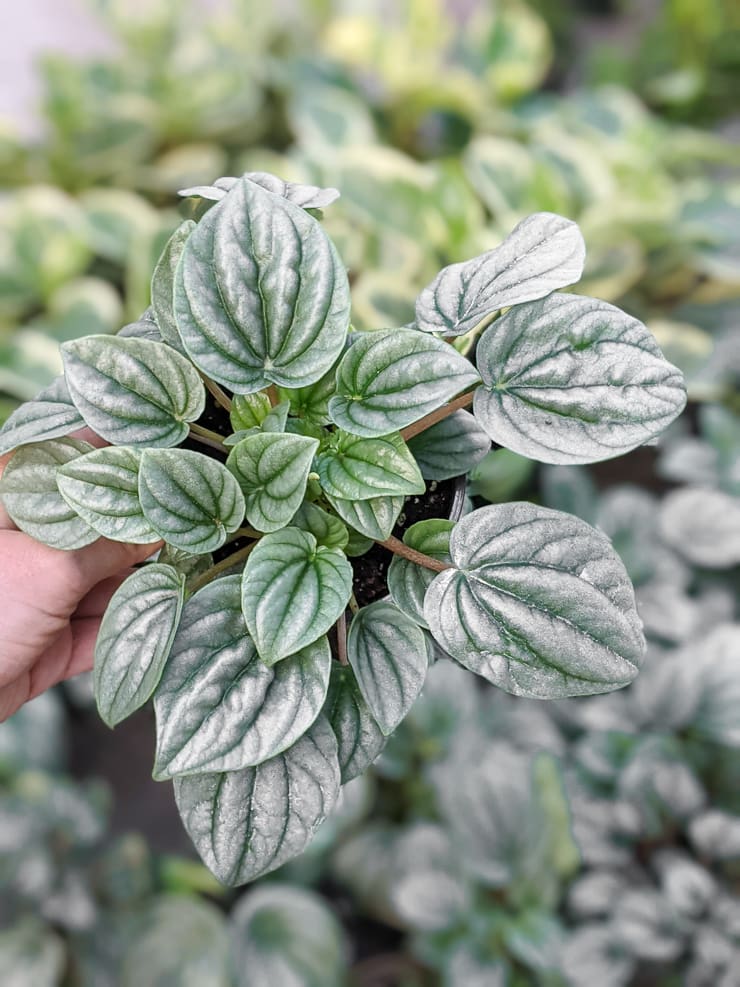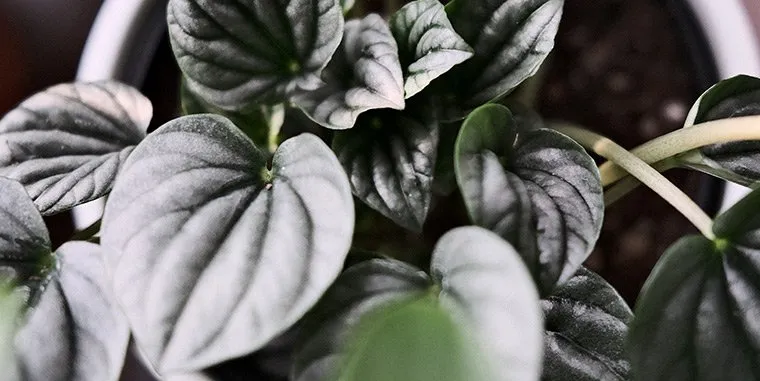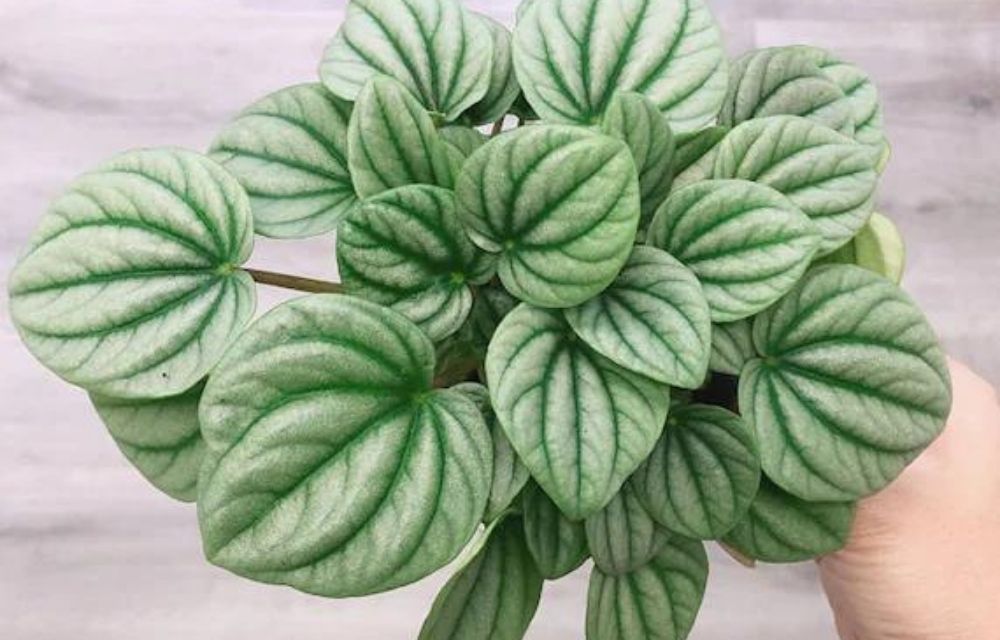Planning to add some new plants to your beautiful indoor garden? You’d love the presence of peperomia frost. This little plant is hardy and is a famous indoor houseplant everybody loves. On this page, you are going to learn everything, especially about this famous indoor houseplant.
Peperomias are houseplants that have fascinating leaves in various shapes and colors. These plants are growing well in groups. It is super easy for indoor gardeners to combine peperomias with some other plants. Today, peperomias are getting more famous.
Growing And Caring for Peperomia Frost
Many people love the frost variant of peperomias. The leaves of this houseplant have the look and color like covered in frost. The leaves’ silvery color looks stunning and special. If you are going to grow this gorgeous indoor houseplant, learn some essentials below before you start.
1. Light Requirement
This indoor houseplant grows best in bright indirect sunlight. The best location to grow peperomia is next to the north or east-facing window. In direct sunlight, the leaves of this plant will burn and turn brown. South facing window isn’t the best location unless you have a sheer curtain covering the window.
If you are looking for the best plant for the bathroom, frost is the right option since it is perfect for low-light rooms. However, if the plant remains small and you figure out that the plant doesn’t grow much, it is crucial to move the plant to a brighter area.
If you place the plant outside the house, the location should have shade. Plant this frost under the trees or on a shady patio. Or you can even hang this plant in a basket as long as it is sheltered from direct sun.
2. Watering the Frost
Always check the soil of this plant once a week. If the soil’s top half turns dry, you need to water the plant. To water this plant, you need to fill a basin or a sink halfway with water. And then set your plants in the water. Wait for 30 minutes before draining the plants thoroughly.
Then you can place the peperomia frost plants back in the plant trays or saucers. When placing the plants in the sink, the water will soak up from its bottom. Then the water will saturate the soil completely without making the leaves wet.
Although the plants’ leaves don’t like water, you can mist the leaves a little to keep the air around the plants humid.
Also read: Peperomia Obtusifolia
3. The best soil for peperomia frost
Frost is not fussy about the soil. However, you must prepare the soil with good drainage. Peperomias are succulent plants and they love well-draining soil to prevent some troubles like root rot. Well-draining soil can also deliver oxygen to the plants’ roots.
Mix your potting soil by using 2 parts of soil, one part of perlite, one part of coconut coir, and also one handful of bark. When making potting soil, perlite should never be forgotten. This is a crucial part since it will lighten the potting soil and help with drainage.
The container you use to grow peperomia frost should have a lot of drainage holes. Add one layer of stones right to the bottom of the soil before you start planting. This is going to improve drainage.
4. Humidity and temperature
Another thing you should know about how to care for peperomias is that the plant will grow beautifully when the temperature is between 60 and 80 degrees Fahrenheit. If you are growing the plant outside in a container, you need to bring it in immediately as the temperature reaches 50 degrees Fahrenheit.
Keep your peperomia frost away from air conditioners or windows that produce cold drafts. These plants don’t grow well in cold or wind snaps. However, the plants also need quality airflow. This is going to prevent rot and fungal disease. Don’t pack your plants in a musty and dark corner.
Peperomias love moderate humidity levels, about 50%. Use a humidifier to increase the dry climates’ humidity levels. Or, place your peperomias in an open terrarium and their conditions will improve.
5. Fertilizing the plant
The next care guide is about fertilizing the plant. Frost’s growing season is between spring and autumn. During the growing season, make sure you feed the frost. Use balanced liquid fertilizer to feed the plants once a month. Avoid feeding the plants with fertilizer in winter.
Peperomias are not heavy feeders. But they will grow healthily if you feed them with a monthly dose of nutrients.
Also read: Peperomia Rosso
Peperomia Frost Care When Diseases Attack
No matter how excellent you are in growing the plant, your plants may face some diseases. You need to help the plants survive and eliminate the disease immediately before it gets worse. Below are some diseases that may kill your frost and what you should do to fix the plants.
1. Root rot
Pythium is a parasitic water mold that will attach to your plants’ roots if you leave the plants in heavily waterlogged soils. This will make the plants’ roots rot. The microorganisms will then cause drooping leaves, wilting, and discolored leaves.
Prevent this trouble from happening. To do so, you need to water your peperomia frost properly. If you can cut off the damaged roots and discard them while the healthy roots can drive the plants, repot your frosts in a fresh soil mix.
2. Spider mites
Spider mites are small mites that you may have found on the underside of the leaves of your favorite plants. If the plants’ leaves look dusty or there are webs on the leaves, you may have to check for spider mites. Those mites will open up the leaf cells, especially on the new growth of the leaf.
If you don’t stop the mites, they will destroy your gorgeous plant. Shower your frost with water and then wipe off the dust or webbing you see. When the plants are clean, spray the plants with insecticidal soap or neem oil.
Peperomia frost is a gorgeous plant with silvery leaves that will beautify your interior in a much better way. But you need to learn how to grow the plants carefully and keep the plants safe from spider mites and root rot.

